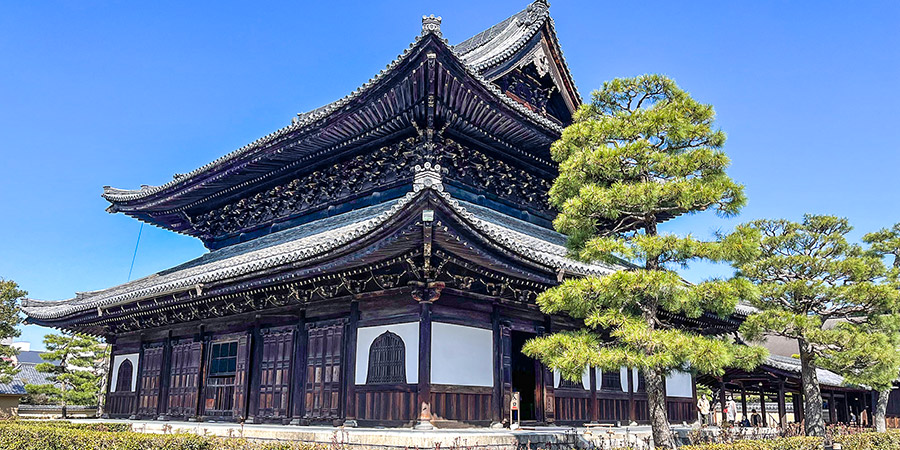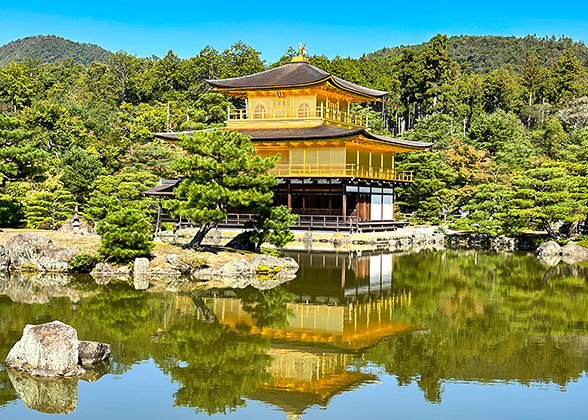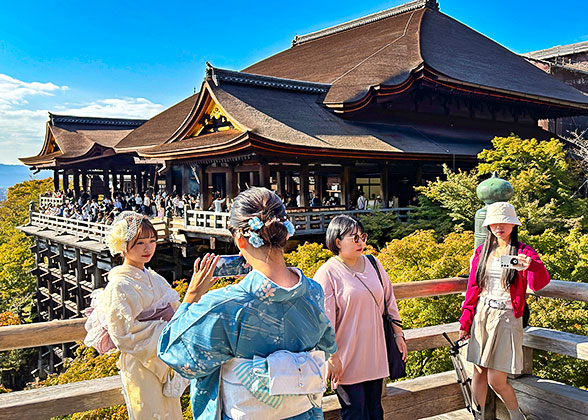Kennin-ji Temple
As the first Zen temple in Kyoto aged more than 800 years, Kennin-ji Temple witnessed the introduction of Zen Buddhism and popular tea culture from China to Japan. Sitting at the boisterous historic area of Gion, Kennin-ji seems like a misfit for its tranquil atmosphere. With Zen-inspired “dry” gardens, it’s a perfect place for Zen fans and travelers alike to meditate and find peace. In the main buildings, there are also nationally treasured paintings to be appreciated.

Kennin-ji Temple
|
The Temple with Tea as Part of Its History
To learn Japanese culture is to learn its tea art, which manifests the philosophy of Japanese Zen Buddhism. And it’s Monk Eisai, founder of the temple, who brought the Buddhist school from Song Dynasty China (960 - 1279) and spread the tea-drinking culture among the public, before which tea was only drunk by high social classes.
Inside the temple, there is a tea room built by Toyotomi Hideyoshi (r. 1585 - 1598), one of the three legendary military leaders in Japan’s history. It attests to the historical fact that aristocratic or samurai class loved Zen, whose support of simplicity resonated with their ethos, over traditional Buddhism.
Kennin-ji Temple is also honored as the place for Yotsugashira-chakai (四頭茶会), literally “tea party of four heads” - the greatest event in Japan’s tea world, which is annually held on April 20.
|
|
|
Zen Gardens to Find Beauty and Peace
Kennin-ji Temple is also loved for its three fascinating gardens: Daioen, Cho-on-tei, and one curiously named “○△□” , but the former two have the most aesthetic value.
Daioen, a Typical Japanese “Dry Landscape” Garden
To the south of the main hall Hojo lies a garden that might be strange to any first-time visitor of Japan: there are neither bushes nor bridges or ponds, but only white raked gravel, rocks, and small lawns. Such garden is called karesansui or dry landscape garden, and Daioen is a typical one. In the eyes of ascetic Zen monks, they combine to symbolize the cosmos through minimalism, with gravel being water and rocks being mountains or islands. The corridor facing the “cosmos” is for visitors to sit and meditate.

Building in the Temple
|
Choontei, a Garden Beautiful from All Angles
Choontei is a mossy courtyard, with three rocks sitting in the center representing three Buddhist gods. The founder has made sure visitors shall find fascinating views from every angle.
|
|
|
Must-See Artistic Works
At the Hojo hall, visitors can find the famous painting of Wind God and Thunder God on the folding screens, a National Treasure of Japan. Images of Fujin the Wind God and Raijin the Thunder God are the most commonly encountered of all Buddhist gods around Japan. With gold leaf as the background, the vivid figures are the wild imagination of a Japanaese painter 300 years ago.
At the Hatto hall right before Hojo is stored Twin Dragons, a mural painted on the ceiling dedicated to the 800th anniversary of Kennin-ji. 15.7 meters (51 feet) long and 11.4 meters (37 feet) wide, this masterpiece of two entangled dragons gives off an eerily solemn vibe to the space.
Know Before Going
Opening hours: 10:00 am – 17:00 pm (Last entry: 16:30 pm)Admission fee: 600 yen
How to Get There?
By bus:From Kyoto Station, take bus No. 206/100 to Higashiyama-Yasui Station, walk 5 minutes.
If you are taking the Keihan Line, get off at Gion Shijo Station;
If you are taking the Hankyu Line, get off at Kyoto-Kawaramachi Station.
It’s a 10 minutes’ walk from the stations to Kennin-ji Temple.
Nearby Don’t-Miss Attractions
Gion area is Kyoto’s historic center to find many Edo-era Japanese houses and encounter enigmatic geishas going to work. It is a must-visit for insight into how Kyoto looked like a few centuries ago.
Yasaka Shrine, fondly called Gion Shrine, enshrines the most venerated Shinto god with fierce holy power to defend people from evil. It’s the origin place of the ancient Gion Festival, one the three great festivals of Japan.
The Kitchen of Kyoto to find all kinds of Kyoto-flavor Japanese street food or dishes. The No.1 destination for culinary experience in Kyoto.
Kiyomizu-dera, aka Pure Water Temple, centers upon the Otowa Waterfall, which can be drunk for blessings on success and happiness. It is attracting numerous people to stand on the veranda of its main hall, to look over Kyoto and season-changing colors around. Kiyomizu-dera is UNESCO-listed. Visitors from Kennin-ji Temple can walk the ancient Ninenzaka and Sannenzaka sloping streets that lead to Kiyomizu-dera.
![]() Pontocho (550 m/0.34 mi away, 7 min’s walk to the northwest)
Pontocho (550 m/0.34 mi away, 7 min’s walk to the northwest)
Located next to Kamo River, Pontocho is a short but historical street with many traditional Japanese houses. It's a good place to enjoy Kyoto's nightlife and experience geisha culture.




